Picture this – a young, wide-eyed artist finds a piece of beautifully weathered wood. As a luthier, he instantly imagines what that deadwood could become – a stunning guitar, perhaps. He’s standing on the precipice of a creation that could produce a melody that will strike the hearts of millions, yet there’s a lot more than mere imagination that goes into crafting a masterpiece. But, let’s leave that story hanging for the moment.
I am R.M. Mottola. Having spent over two decades in lutherie and being an active figure in the community, I can testify that selecting, preparing and using guitar body blanks is an art in itself. And it’s no secret that the tone and playability of a guitar are heavily influenced by the types of wood used in its construction.
Did you know that the figure or flames you see in the wood grain for guitars can increase the value of your custom guitar building project exponentially? However, in this comprehensive guide, we’ll go beyond the surface, going deep into what constitutes the very life of a guitar – the guitar body blank.
From understanding this building block to choosing the best woods, preparing the blanks right and using them efficiently, this guide will take you on a fascinating journey. So, let’s take that first step together into a world where raw wood morphs into a mesmerising musical instrument.
Understanding Guitar Body Blanks
Types of Wood
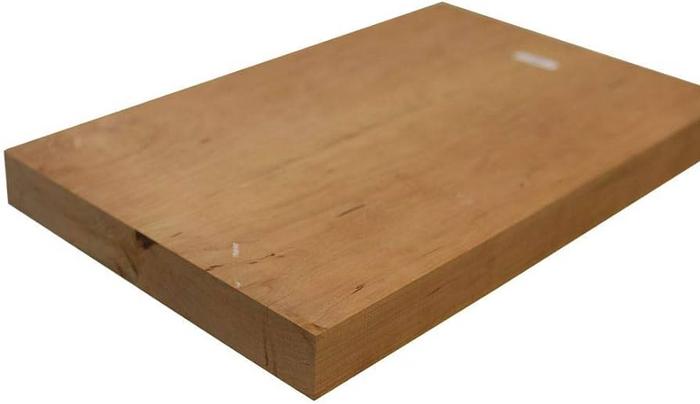
Exploring the realm of ‘tonewoods’, we dive into the heart of guitar crafting. The choice of wood significantly affects the tonal quality, resonance, and overall aesthetics of the instrument. As an engineer turned luthier, with years of intricate explorations spanning multiple tonal and aesthetic traits, I’ve developed an in-depth appreciation for the unique qualities of different guitar body wood types.
Exotic woods for guitar building often command attention due to their distinct sound and striking appearance. For instance, Koa, a Hawaiian native, is visually stunning and contributes a warm tone, while Zebrawood from central Africa adds aggressive overtones to the sound profile. However, understanding the intended sonic output is paramount as the supreme aesthetics of exotic woods do not always align with the desired tonal qualities.
Intriguingly, traditional woods like Mahogany, Maple, and Ash have stood the test of time. Mahogany, revered for its rich, warm tones, offers excellent sustain and depth. Maple, conversely, imparts a brighter tone with remarkable clarity and definition—ideal for lead guitarists. Ash balances between warmth and brightness, contributing a twangy, sweet resonance characteristic of vintage guitars.
The wood’s durability, workability, and availability also contribute to its selection. As exotic woods become less accessible due to ecological reasons, guitar builders are innovatively exploring sustainable alternatives like Bamboo and Bark Beetle Pine.
In my journey of becoming a luthier, understanding the distinct qualities of these woods has been crucial. It’s this inherent diversity that makes each guitar unique, and understanding and harnessing these differences is a central part of my craft. As we proceed further into selecting and preparing guitar body blanks, remember that the wood type informs the instrument’s heart and soul.
Common Guitar Body Shapes
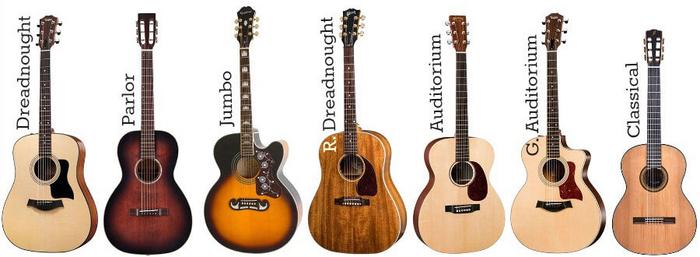
With years as a luthier under my belt, I’ve made a multitude of guitar body shapes, which are a vital aspect of understanding guitar body blanks. The shape you opt to carve out can deeply affect the instrument’s tone and playability.
Undoubtedly, the most common types familiar to most are electric guitar bodies and shapes like the Stratocaster, Telecaster, and Les Paul. These are easily identifiable by their unique curves and contours. Yet, there’s a plethora of shapes beyond these classics. I’ve crafted anything from the adventurous Flying V to the elegant semi-acoustic hollow bodies, each exuding a distinct character of their own.
Crafting different guitar body shapes involves more than just aesthetic preferences. It leans heavily on the specific sound you are looking to produce. For instance, the compact Telecaster body shape is famous for its bright, twangy tone. The larger Les Paul style, on the other hand, has a reputation for a warmer, fuller sound. These subtle differences prove how vital the guitar’s shape factors into the overall performance of the piece.
In conclusion, while the type of wood used is of importance, the guitar body shape catered from a blank is equally impactful. Knowing this, luthiers must consider their options carefully when crafting their guitars. This aspect will next lead us into the path of selecting suitable body blanks to fulfill your vision of the perfect guitar.
Selecting Guitar Body Blanks
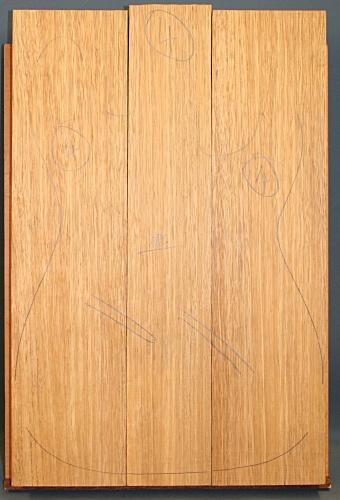
When I first entered the world of guitar crafting, I thought selecting wood for guitar bodies was as simple as choosing the right species, something strong and resonant. I quickly learned, however, that the type of wood you choose is just the beginning. The texture, the color, and most importantly, the wood grain for guitars, all play a significant role in the final product. I often say that each piece of wood carries a song within its grains, ready to come to life in the hands of a skilled luthier. The guitar body blank you choose is the canvas on which that song will be written.
It’s the grains, the lines, and patterns that you see on the surface of the wood, which give each guitar its unique personality. Sounds unbelievable, isn’t it?
Would you believe that every grain in wood plays a vital role in the sound of a guitar? It’s true. This thing of beauty, the wood grain, essentially determines how sound waves travel through the wood of the guitar. The direction, width, and pattern of these grains will impact not just the look, but the tone, resonance, and sustain of the instrument. It’s this intricate dance of nature and science that makes each guitar, even those made from the same species of wood, distinctly unique.
Consider the woods with tight, straight grains for instance. These produce bright tones and are best suited for acoustic guitars where sustain and clarity are of prime importance. On the other hand, woods with wide or irregular grains come with their own set of tonal characteristics, which may be better suited for electric guitars. These little discoveries with their multitudes of implications have revolutionized my guitar-making process.
But beyond the acoustics, there is also the matter of workability. Some woods, by virtue of the course of their grains, might be easier to work with than others. Knots and irregularities in the grain can present challenges in carving and sanding, which need to be accounted for right at the stage of selecting guitar body blanks.
Further complicating the process is the undeniable beauty of some wood grains. Quilted Maple, for instance, with its wavy, three-dimensional patterns, can make for visually stunning guitars. But the tonal properties and workability of such woods are a different matter altogether.
In my personal experience, while the aesthetic aspect does make a strong initial impact, it is the tonal properties that will contribute to the long-term satisfaction of the player. However, the visual appeal should not be ignored. After all, the perfect guitar should be a feast for both the ears and the eyes.
Selecting guitar body blanks, therefore, becomes a matter of weighing all these factors against each other. It’s about understanding the relationship between the science of acoustics, the nature of the wood, and the needs of the guitar player. It’s about sparking that joyful dance of grains, tones, and craft, bringing the song hidden within the wood to life.
In conclusion, remember that each piece of wood carries a unique song of its own, woven into its grains and waiting to come alive. And as a luthier, it is your hands that can coax that song into the world, one carefully chosen guitar body blank at a time.
Preparing and Using Guitar Body Blanks
Preparation Process
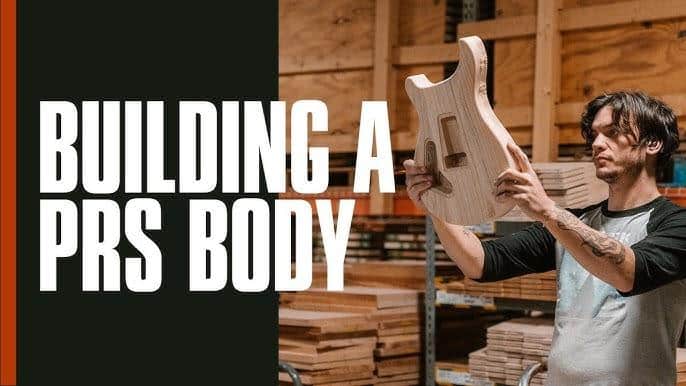
After selecting the most suitable guitar body blanks, the most crucial step that follows is the preparation process. This stage, where the raw luthier supplies get transformed into the body of a guitar, is where the true craft of a luthier shines. As with every phase of guitar making, the preparation process involves several finely-tuned stages. Each of these contributes to the final sound, look, and overall quality of the instrument.
In my journey as a luthier, I’ve learned that preparing wood for a guitar body requires much patience, precision, and care. It begins with the drying and conditioning of the wood, a time-consuming yet crucial step that ensures the stability and longevity of the guitar. The wood is then cut and shaped, refining the initial roughened form into a smooth, polished guitar body blank.
To further enhance the character and appearance of the guitar body, the wood is often treated with oils or stains. This also plays a significant role in protecting the structure of the wood, adding to the durability of the final product.
Having the right tools and knowing how to use them effectively is also key in the preparation process. From saws to chisels, routers to sanders, each piece of equipment contributes to the transformation of the blank into a finished guitar body. But it’s not just the tools—it’s the luthier’s skill, experience, and attention to detail that truly make the difference.
It’s important to remember that preparing a guitar body blank is not about rushing or cutting corners. It’s about taking the time to understand the nature of the wood, working with its strengths and imperfections to produce an instrument that resonates beautifully in both sound and form.
In concluding, I delve into the preparation process not just because it is essential, but because it elegantly demonstrates the symbiosis of luthier and the raw materials in the creation of a remarkable instrument. As we advance in this comprehensive guide to next stage of DIY guitar building, this shared understanding of the significance of the preparation process will surely be a valuable base to build upon.
DIY Guitar Building
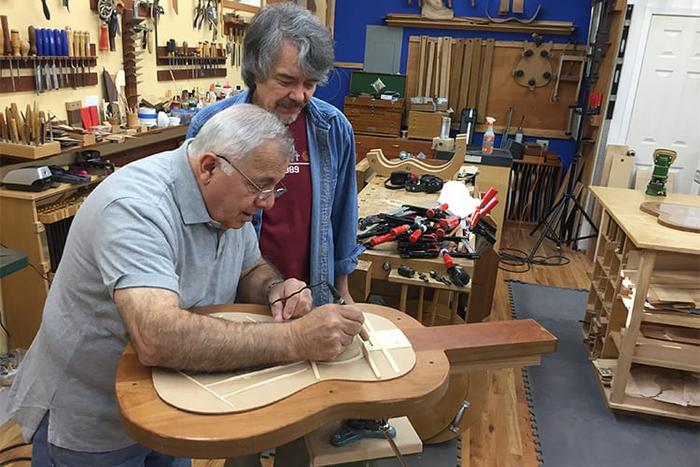
Preparing a guitar body blank constitutes a vital step, which paves the way for the subsequent phases of DIY guitar building. Embracing the mantle of a luthier, I delve into this unique process of crafting, formulating a personalized narrative and sharing invaluable insights drawn from my experiences.
Custom guitar building is an intimate process that requires patience, precision, and a deep understanding of the unique characteristics of guitar body blanks. It has offered me a profound sense of accomplishment, as I transform a simple block of wood into a beautiful musical instrument, resonating with my own rhythm and fingerprints.
While DIY guitar kits simplify this process to some extent by providing pre-cut and pre-drilled parts, I highly recommend starting with a raw guitar body blank for those seeking a truly personalized crafting experience. This approach, though challenging and time-consuming, offers an incomparable understanding of your instrument’s anatomy and spirit.
The use of luthier supplies is pivotal to the success of custom guitar building. I have discovered the significance of an array of essential tools like band saws, drum sanders, and radius dishes. Each performs a crucial role in shaping, sanding, and finishing the guitar body, sculpting not just its physical form but also its acoustic character.
While diving into the nitty-gritties of woodworking might seem overwhelming initially, it’s worthwhile to remember that every great luthier started their journey somewhere. Years of my own practice and observation have shown me that respect for the material, a scientific understanding of wood grain, damping factors, and sound velocity, coupled with the artisanal perspective, can birth stunning DIY guitar creations.
Moving ahead with passion and diligence in creating your guitar, be ready to celebrate your victories, learn from your mistakes, and quite literally, tune into the harmony of woodworking and music.
Let’s progress to the next step in our comprehensive guide, discussing frequently asked questions about guitar body blanks and the beautiful craft of luthier, providing you with further insights and refining your DIY guitar building journey.
FAQs
What is a Guitar Body Blank?
A guitar body blank is a piece of wood that is used to make the body of a guitar. It is typically cut from a larger piece of wood and then shaped and finished to create the final guitar body.
How do I select a Guitar Body Blank?
When selecting a guitar body blank, there are a few factors to consider. These may include the type of wood, the grain, the weight, and the size and shape of the blank. It’s important to choose a blank that suits the type of guitar you’re making, and one that allows for the sound and tone that you wish to achieve.
How do I prepare a Guitar Body Blank?
Preparing a guitar body blank typically involves cutting it to the right size, sanding it down to smooth any rough edges, and then applying a finish to protect the wood and enhance its appearance. This process can vary depending on the type of guitar you’re making and the specific blank you’ve chosen.
What are some useful tips for using Guitar Body Blanks?
When using a guitar body blank, some useful tips may include taking your time when cutting and shaping the blank, using the right tools for the job, and ensuring that the blank is properly lined up and positioned before you start working on it. It can also be helpful to practice on a scrap piece of wood first to get a feel for the process.
Conclusion
Ever dreamt of making your own guitar from scratch? I did too, and look where it got me. Let’s recap. In selecting, preparing, and using guitar body blanks, understanding the nature, types, and shapes of the wood is key. The choice of material could either mar or enhance the overall quality of your custom-built guitar.
Your knowledge matters as much as your passion when it comes to custom guitar building. The more informed you are about the differing attributes of various wood types, the more adept you’ll become in making a selection that brings your envisioned guitar to life.
Remember, the preparation process requires utmost precision. So, don’t rush! You’ve already invested time and energy into sourcing your body blank, it deserves your meticulous attention when bringing your DIY guitar building dream into reality.
In conclusion, the mastery of using guitar body blanks is not just a skill but an art form that holds the key to superior custom guitar building. This understanding has shaped my professional journey and I deeply hope it does the same for you. So as you take this knowledge and begin your creative endeavor, know that every strum you play, resonates from a story you built.
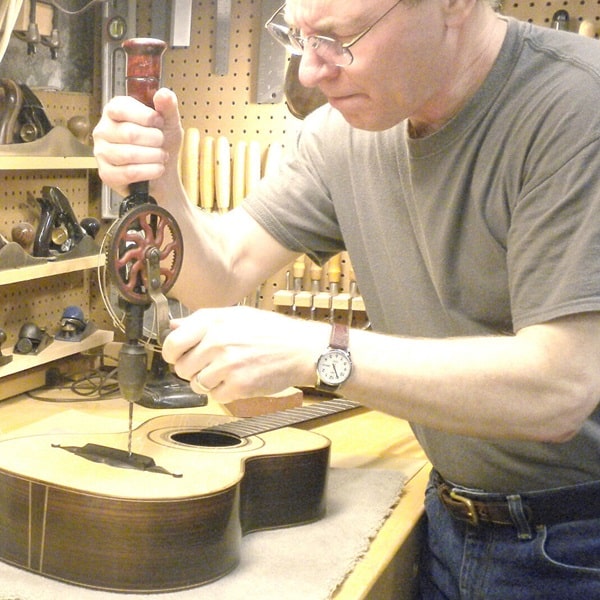
R.M. Mottola, an engineer-turned-luthier, revolutionizes stringed instrument design with his deep focus on acoustics and ergonomics since 1994. As editor of the Savart Journal and a key contributor to American Lutherie, Mottola merges science with artistry in lutherie. He enriches the field with his extensive knowledge, shared through his Liutaio Mottola website, making him a beacon in the world of modern instrument craftsmanship.
